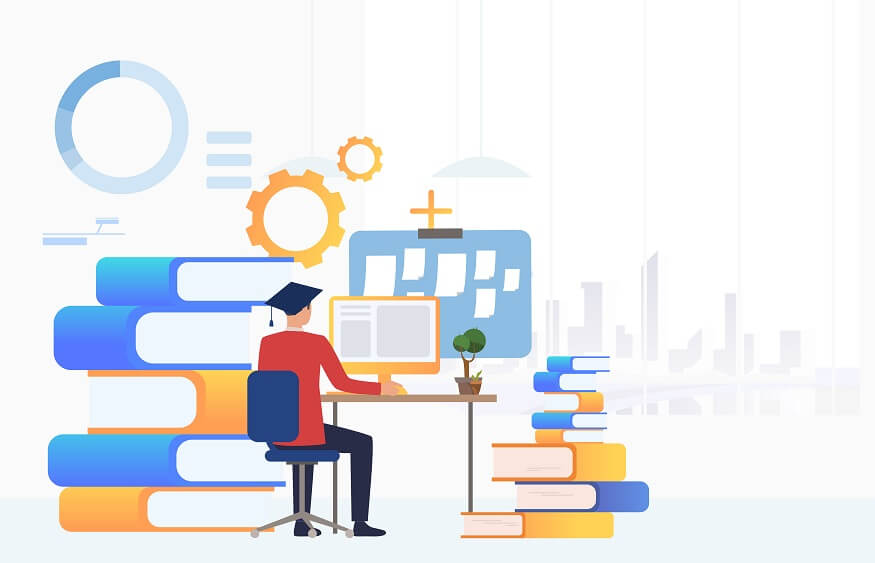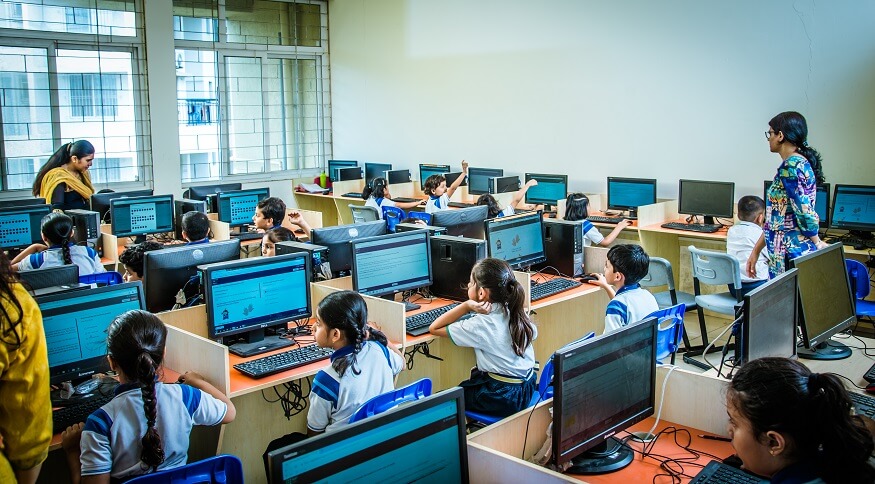Education is an effective tool with the power to change lives. The goal of integrated education, sometimes called inclusive education, is an approach that strives to provide equal opportunities for all students, no matter their abilities or disabilities.
Teachers are the backbone of an educational institution. Without teachers and effective teaching techniques. Teachers can only offer quality education when they are equipped with modern-day technology that enhances the education experience. That’s where an integrated curriculum and learning system comes in. It is a boon for students and teachers who are trying to impart a satisfactory educational experience.
Integrated education aims to develop an inclusive learning environment where students with different needs and backgrounds, including those who have emotional, cognitive, or physical disabilities, may study alongside their classmates in conventional classes. It highlights acceptance, diversity, and understanding among students, increasing a sense of equality and feeling connected.It highlights acceptance, diversity, and understanding among students, increasing a sense of equality and feeling connected.
Also Read: Guide To Childhood Education – Daycare, Preschool, Or Kindergarten
How Does It Work in India?
The goal of integrated education in India is to guarantee that all children, regardless of their upbringing or disability, receive a decent education in public institutions. Let’s examine some crucial elements of the Indian education system’s implementation of integrated education:
Inclusive Curriculum
Integrated education emphasises creating a curriculum that satisfies the various learning requirements of every student. The curriculum is versatile and flexible and highlights personalised instruction and assistance to enhance academic success for every child.
Infrastructure that is accessible
Schools take measures to make their buildings physically accessible. They install ramps, elevators, and modified restrooms, enabling students with physical disabilities to navigate the school premises comfortably and safely.
Individualised help
Special educators, resource rooms, and assistive technology are used to provide students with special needs with personalised help.
Teacher preparation
Teachers are essential for inviting a learning atmosphere. To recognise and meet the requirements of various learners, they undergo specialised training. Through this training, they are given the tools they need to effectively adjust their lessons to the learning styles of each student.
Collaboration and Peer Support
To create suitable solutions and accommodations for kids with disabilities, regular classroom instructors work with special educators and therapists. In addition to providing support, fostering connections, and encouraging a sense of belonging among all students, peers also contribute to an inclusive atmosphere.
Sensitization and Awareness
To encourage acceptance, empathy, and understanding among students, teachers, and parents, schools hold sensitization and awareness programmes. These programmes work to dispel misconceptions and develop a caring and welcoming school environment.
Also Read | Benefits of ICSE Board Education
Objectives of Integrated Education
Equal Opportunities
Integrated curriculum and education attempts to give all pupils equal chances, regardless of their talents or limitations. It aims to remove obstacles that can limit some students’ access to high-quality education.
Inclusive Learning Environment
Integrated education aims to establish an inclusive learning environment where students with various needs may come together to study and develop. It encourages kids to accept one another and to respect one another.
Academic Success
Ensuring that all students achieve academic success is the goal of integrated curriculum. It focuses on modifying instructional techniques, offering specialised assistance, and encouraging an inclusive curriculum that satisfies the various learning requirements of students.
Social Inclusion
It increases interaction between students and collaboration, and integrated education attempts to promote social inclusion. It promotes empathy, eliminates misconceptions, and cultivates wholesome connections among kids with and without impairments.
Personal Development
Integrated curriculum emphasises the value of each student’s personal development. It tries to increase their independence, self-confidence, and self-esteem so they may realise their full potential and make valuable contributions to society.
Freedom and Rights
Integrated teaching seeks to empower students with disabilities by ensuring their rights to education, participation, and equal opportunities. It aspires to establish a society that respects each person’s dignity and cherishes variety.
Strategies and Examples
One real-time execution example of integrated teaching is the use of differentiated instruction. Teachers introduce various teaching strategies, materials, and assessment methods to cater to the diverse learning needs of their students. To accommodate students with a variety of knowledge of mathematics, a teacher could offer several levels of worksheets or tasks during a maths class. Each student can proceed at their own speed while receiving the right level of challenge or assistance thanks to this.
Another example is the utilization of assistive technology. Specialised tools or equipment that help disabled students access information, participate in class activities, or communicate effectively may be helpful. A student with vision problems, for instance, may use screen reading software or Reading devices to access written materials, while a student with hearing disability would use assistive listening equipment or captioning services to access aural information.
Types of Integrated Curriculum
Theme-based Integration
This approach connects different subjects by organizing learning around a central theme or topic. For example, a unit on the environment could involve studying science concepts, exploring literature related to nature, and analysing the social and economic impact of environmental issues.
Project-based Integration
Students engage in extended projects that integrate multiple subject areas. They collaborate to solve real-world problems, applying knowledge and skills from different disciplines. For instance, a project on designing a sustainable community might involve elements of science, mathematics, social studies, and technology.
Inquiry-based Integration
This approach among the types of integrated curriculum emphasizes student-driven inquiry and exploration. Students pose questions, investigate topics, and make connections across various subjects to construct their own knowledge. Teachers facilitate the process and guide students’ learning experiences.
Arts Integration
Integrating arts (visual arts, music, drama, etc.) into the curriculum enhances creativity and allows students to express themselves while making connections to other subject areas. For example, a history lesson on ancient civilizations could include creating art inspired by that era.
Technology Integration
This approach incorporates technology tools and resources across different subjects to enhance learning. Students use technology for research, data analysis, multimedia presentations, and collaboration.
Also Read: CBSE vs ICSE: The Difference Between CBSE and ICSE Board
Advantages of Integrated Education
- Enhanced social skills and empathy through interaction with diverse peers.
- Improved academic outcomes for all students due to tailored instruction.
- Promotes inclusivity, fostering a sense of belonging for students with disabilities.
- Develops teamwork and collaboration skills.
- Prepares students for a diverse and inclusive society.
- Reduces stigmatization and promotes acceptance of differences.
- Encourages respect and appreciation for individual abilities and backgrounds.
Conclusion
At EuroSchool, we understand that Integrated education in India signifies an important step towards building a society that values diversity and provides equal educational opportunities for all. Integrated schooling ensures that every kid may learn, grow, and flourish alongside their classmates by establishing inclusive policies, creating flexible curriculum, and creating a supportive atmosphere. Let’s embrace this strategy, recognising the individuality of every student, and building a more promising, inclusive future for everyone. Know more about our school admission process to enrol your child to one of the best schools!










